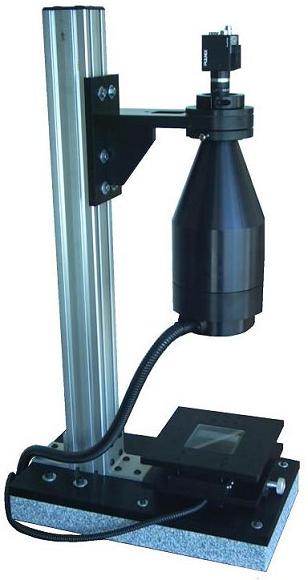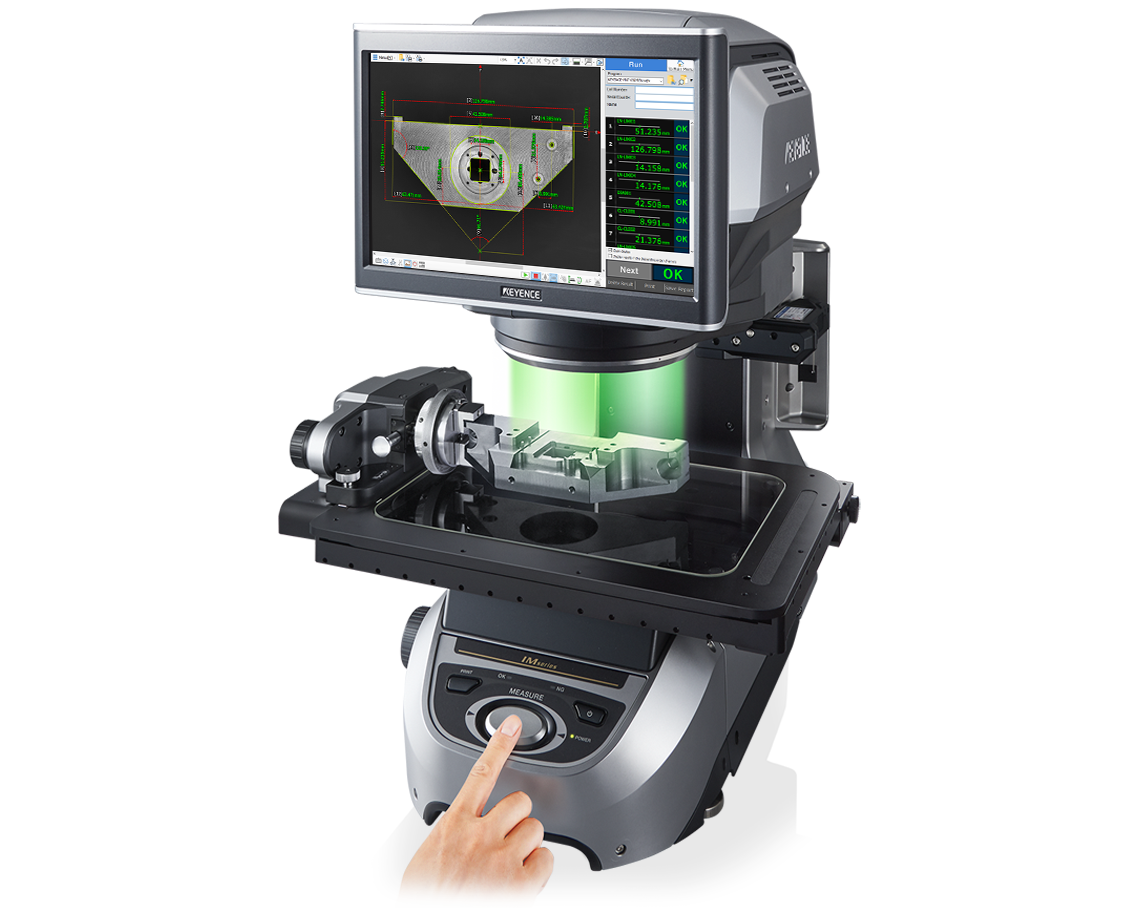Real-world examples of optical measurement in automotive quality control
Real-world examples of optical measurement in automotive quality control
Blog Article
The Duty of Optical Dimension Solutions ahead of time Metrology Strategies
Optical measurement systems have actually transformed metrology, bringing a level of accuracy that was when inconceivable. As you check out further, you'll discover how these systems are forming the future of measurement and top quality control.
The Development of Width: A Historical Viewpoint
As you check out the background of assessment, you'll locate that its development mirrors humanity's mission for accuracy and standardization. From old civilizations making use of body parts as systems of dimension to the advancement of standard weights and measures, each action reveals our desire for precision. The Egyptians built the pyramids utilizing specific measurements, while the Romans advanced design with their sophisticated measuring tools.
Throughout the Renaissance, clinical breakthroughs moved the emphasis towards more empirical techniques, leading the way for contemporary width. The introduction of the metric system in the late 18th century noted a significant turning point, developing global standards. Throughout the 20th century, technological improvements further transformed assessment, enabling highly precise dimensions in numerous areas.
Today, width proceeds to evolve, integrating digital innovation and automation. This background highlights not simply the relevance of dimension yet additionally our relentless pursuit of improving accuracy and consistency in our increasingly complex world.
Principles of Optical Measurement Systems
Understanding the principles behind optical dimension systems is important for precise results in assessment. You'll wish to take into consideration essential optical principles, measurement precision variables, and reliable system calibration strategies. Each of these components plays a crucial function in ensuring your measurements are trusted and specific.
Essential Optical Principles
While checking out optical dimension systems, you'll encounter basic optical principles that develop the foundation of accurate information procurement. Light behaves in foreseeable means, and comprehending these actions-- like reflection, diffraction, and refraction-- is essential for efficient dimensions. By understanding these principles, you'll be furnished to utilize optical technologies efficiently, leading the means for advancements in assessment and guaranteeing your dimensions are both reliable and repeatable.
Dimension Precision Factors
To attain high measurement precision in optical systems, several factors enter play, influencing the reliability of your results. The quality of the optical components matters significantly. Top notch lenses and detectors lower aberrations and sound, guaranteeing your dimensions are specific. Second, ecological problems like temperature level and moisture can impact measurements, so maintaining a stable atmosphere is vital. Third, the placement of the optical system is essential; also small misalignments can result in significant errors. The wavelength of light used impacts the resolution and precision of your dimensions. By dealing with these elements, you can enhance the total efficiency of your optical measurement systems, leading to even more precise and reliable outcomes in your metrology applications.
System Calibration Methods
Accomplishing high dimension accuracy is just component of the equation; appropriate system calibration strategies are similarly essential in optical measurement systems. To assure your system provides trustworthy results, you must frequently adjust it making use of conventional referral products. Start by changing the optical elements, like lenses and mirrors, to decrease systematic errors. Next off, use well-known measurements to confirm the system's result and make essential adjustments. It's likewise vital to make up environmental elements-- temperature and humidity can impact dimensions. Apply a regular calibration schedule to maintain consistency in time. Lastly, document all calibration procedures and results; this will assist you track efficiency and attend to any drift in precision. With these methods, you'll improve the dependability of your optical measurement system.
Trick Technologies Behind Optical Dimension
Optical dimension systems depend on several key modern technologies that boost accuracy and efficiency in metrology. One crucial modern technology is interferometry, which utilizes the interference of light waves to gauge tiny displacements and surface abnormalities with extreme precision. You'll additionally discover laser scanning systems, which capture thorough 3D data of objects promptly, making them very useful for dimensional evaluation.
Additionally, CCD and CMOS sensing units play a considerable role in transforming light into electric signals, permitting high-resolution imaging and accurate dimensions. Advanced algorithms for image handling additionally improve dimension accuracy by analyzing data in genuine time, filtering system out noise and improving functions.
Ultimately, optical fiber offer adaptability and the capability to determine in difficult settings while maintaining signal stability. you could try these out By leveraging these technologies, you can achieve exceptional cause your assessment jobs, making sure that your dimensions are both trusted and accurate.
Applications of Optical Measurement in Market
As industries increasingly demand accuracy and efficiency, the applications of optical measurement systems have actually come to be essential across numerous markets. In manufacturing, these systems help you keep an eye on measurements and tolerances in real-time, guaranteeing quality assurance without taxing hand-operated checks. In the automobile industry, optical measurements help in straightening components with accuracy, improving safety and performance.
In electronics, you're using optical techniques to inspect min features on circuit card, detecting issues that might bring about failures. The aerospace sector take advantage of non-destructive screening techniques, permitting you to evaluate materials and components without endangering their honesty.
Optical measurement also plays an essential role in textiles, guaranteeing material dimensions satisfy specific requirements. optical measurement. With their ability to supply high-resolution data promptly, these systems encourage you to make informed decisions, improve processes, and ultimately drive technology throughout your market
Enhancing Accuracy and Performance in Measurements
When you believe regarding enhancing precision in dimensions, precision in your measurement techniques is essential. By simplifying these processes, you can accomplish quicker outcomes without giving up top quality. Allow's check out how embracing advanced optical dimension systems can raise both accuracy and performance in your job.
Precision in Dimension Methods
Accuracy in dimension strategies is essential for achieving reputable outcomes in width, specifically since small discrepancies can lead to significant errors. By using sophisticated optical measurement systems, you can boost the precision of your dimensions. In enhancement, exact dimensions permit you to keep high quality control, making sure that items satisfy rigid specs.
Enhancing Measurement Processes
To enhance accuracy and efficiency in dimensions, simplifying your dimension procedures is vital. Begin by adopting optical measurement systems that give real-time information, minimizing the time spent on manual recording. These systems often incorporate flawlessly with existing software application, enabling you to automate data collection and evaluation.
Next, standardize your dimension procedures. By executing consistent treatments, you lessen irregularity and enhance repeatability. Do not fail to remember to frequently calibrate your equipment to ensure its precision.

The Influence of Optical Measurement on Research Study and Growth
As scientists endeavor to push the limits of technology, optical measurement systems have ended up being crucial devices in the growth process. These systems offer you with accurate, real-time information that boosts your capacity to assess complex materials and structures. In different fields, from biotechnology to aerospace, you depend on optical dimensions to boost and maximize layouts item efficiency.

With high-resolution imaging and non-contact approaches, you can decrease example disturbance, permitting even more precise results. This capability to capture minute information increases your R&D cycle, allowing you repeat styles swiftly and effectively. In addition, optical dimension cultivates cooperation throughout self-controls, as the data generated is frequently easily interpretable and shareable.
Eventually, integrating optical measurement systems right into your research study not only increases productivity yet likewise strengthens your understanding of the phenomena you research. By leveraging these sophisticated techniques, you're far better outfitted to introduce and stay in advance in a competitive landscape.
Future Trends in Optical Dimension Solutions
With the rapid innovation of innovation, you're likely to see substantial shifts in optical dimension systems that will certainly redefine their application across numerous markets. You'll notice an action toward increased automation and assimilation of synthetic knowledge, enabling real-time data analysis and enhanced accuracy. Miniaturization is another pattern; portable devices will certainly make it possible for dimensions in tighter spaces, making them suitable for fields like aerospace and biomedical applications.
Anticipate to see systems that can run in challenging atmospheres, supplying reliable measurements in extreme conditions. As these modern technologies merge, you'll find that optical measurement systems not just boost accuracy yet also weblink improve process, eventually driving technology and performance in your projects.
Frequently Asked Questions
How Do Optical Measurement Solutions Compare to Standard Dimension Techniques?
Optical dimension systems use greater accuracy and faster outcomes contrasted to standard strategies. You'll locate they catch even more data points properly, lowering human mistake and enhancing reliability, making them a recommended choice in different applications.
What Industries Benefit Many From Optical Measurement Systems?
You'll find sectors such as aerospace, auto, and electronic devices profit most from optical measurement systems. These industries count on exact dimensions to ensure quality and performance, boosting performance and minimizing expenses through innovative modern technology.

Are Optical Measurement Equipments Expensive to Execute?
Optical dimension systems can be costly to apply, however their accuracy and effectiveness often validate the cost. Purchasing such technology can cause significant long-lasting financial savings and enhancements in top quality across different applications.
What Abilities Are Required to Run Optical Dimension Systems?
To run optical dimension systems, you'll need strong logical skills, interest to information, and proficiency in software application devices. Knowledge with optics and an understanding of measurement principles will certainly additionally enhance your efficiency and performance.
How Do Environmental Aspects Influence Optical Measurements?
Environmental elements like air, moisture, and temperature level top quality can distort optical measurements. You'll discover variants in precision as a result of light disturbance or refraction. optical measurement systems. Maintaining steady click this conditions is necessary for accurate and reputable optical dimension outcomes
Final thought
In recap, optical measurement systems are revolutionizing width by supplying unrivaled precision and performance. As you check out future trends, you'll see just how the combination of AI and automation will proceed to raise dimension methods, driving development and boosting high quality control.
Achieving high dimension accuracy is only component of the formula; proper system calibration techniques are just as essential in optical measurement systems.When you assume about improving accuracy in measurements, accuracy in your dimension techniques is vital. By making use of advanced optical dimension systems, you can improve the precision of your dimensions.To enhance accuracy and efficiency in measurements, improving your measurement procedures is vital. Exactly How Do Optical Dimension Systems Compare to Conventional Dimension Techniques?
Report this page